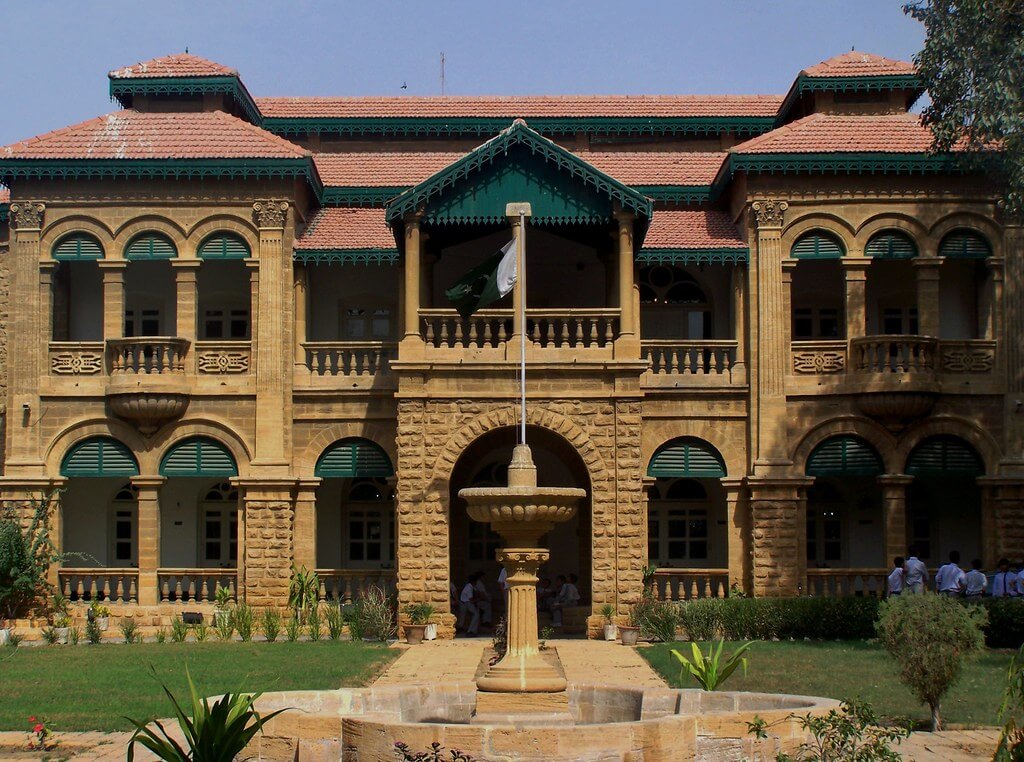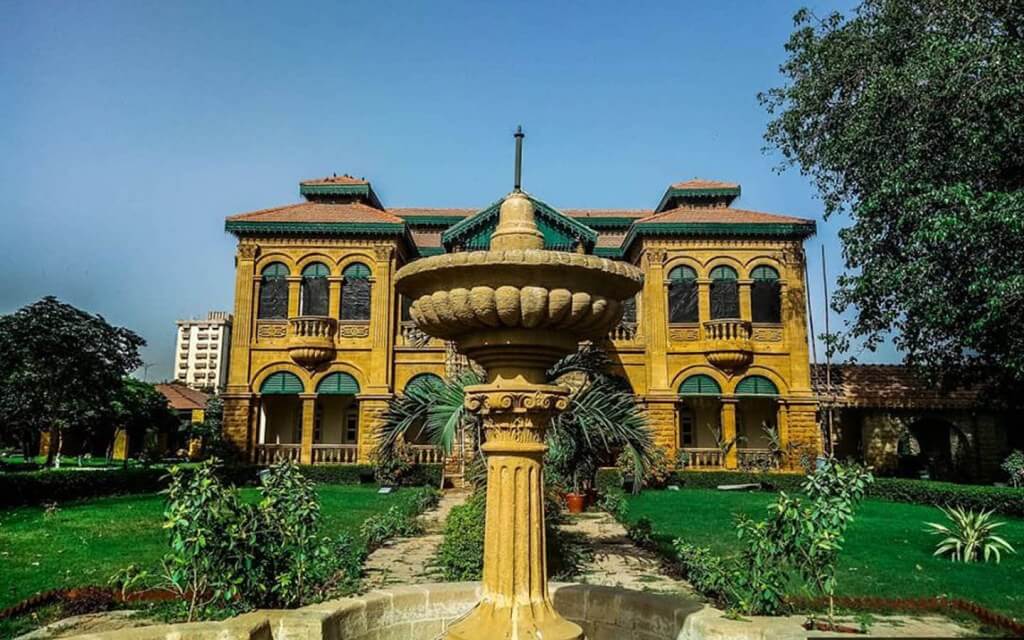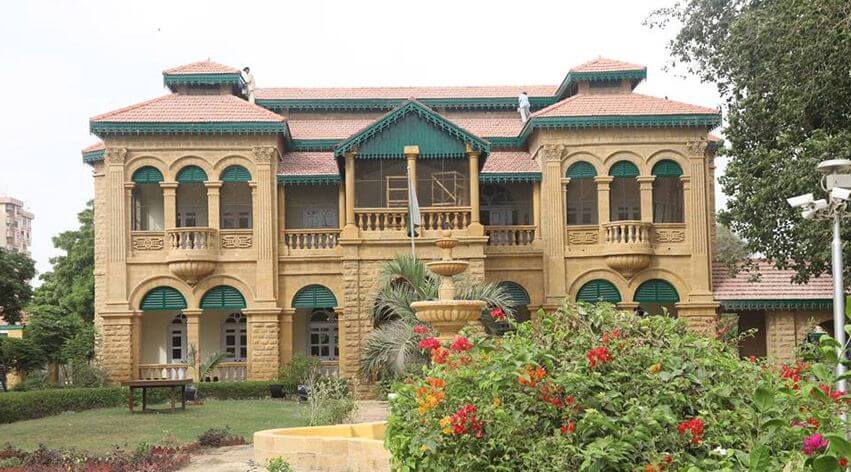Quaid E Azam House Museum Karachi
It is said that the nations who forget their history are the ones who are eventually failed in the dust of time. It is important to remember the roots from which you came, especially if the past you harbor as a nation in your history is significantly brilliant and based on thousands of sacrifices and the hard work of millions. In the case of Pakistan, it wouldn’t be wrong to say that the history of this country starts with the name Muhammad Ali Jinnah, otherwise most commonly known as QUAID-E-AZAM of Pakistan. To commemorate the memory of the founder of Pakistan, the Quaid-e-Azam house museum was created in 1985, which happens to be the residency of the leader back in the days of his life. The Quaid-e-Azam museum house is located in Karachi, Sindh, Pakistan, and is also known as the Flagstaff house. This building shows the devotion that the people of this country have for their fearless, intelligent, one-of-a-kind, and brilliant leader. Also, it serves the purpose of working as a tour down memory lane for the old generation of this country and a reminder for those too young new youngsters. The latter want to know more about the history of this country because, without the complete comprehension and understanding of the legacy that Quaid-e-Azam left for the people of Pakistan, it is impossible to move towards a better future. History is needed to ascertain whether the youth will follow in the footsteps of their leader. Hence Quaid-e-Azam house museum Karachi is dedicated to honoring, protecting, and cherishing the legacy of Jinnah for the centuries to come.
MUSEUM OVERVIEW
The Flagstaff house, now known as the Quaid-e-Azam house museum Karachi, was bought in 1943 by Muhammad Ali Jinnah for 150,000 Pakistani Rupees. Jinnah bought it from the former mayor of Karachi named Sohrab Katrak. He lived in the flagstaff house for over four years, from 1944 to 1948, until the unfortunate event of his demise after one year of the partition. This Quaid-e-Azam house museum is a place of nostalgic, sentimental value for many people in Pakistan because this is precisely where their leader took sanctuary in his last years on earth, especially during his ailing and ever-declining health. However, decades after his sad demise due to tuberculosis, in 1985, the government of Pakistan officially became the caretaker of the Flagstaff house, which was named as Quaid-e-Azam house museum after it was dedicated for the sole purpose of cherishing and preserving the golden memory of Jinnah.

HISTORY OF QUAID E AZAM HOUSE MUSEUM KARACHI
As far as history goes, the flagstaff house in Karachi is one of the oldest and most historically significant buildings in Karachi and the entire country. The leading architectural and historical piece of the Quaid-e-Azam house museum Karachi was built during the British Colonial Era and was constructed in 1886. The person responsible for creating what would become a marvel and sentimental piece of history for so many Muslims a century later was known by the name Moses So make. Moses So makes one of the most renowned architects of his time. He hailed from Great Britain and traveled to the sub-continent to create this masterpiece known as the Quaid-Azam house museum. He is also the mastermind behind the marvels such as the Mules mansion, Karachi Gaon Hall, Edward house, and Bai Virbaijee Soparivala Parsi high school. The Quaid-e-Azam house museum is often confused with the Wazir Mansion, located in the Kharadar district of Karachi. This particular place is also significant because it is where Jinnah was born.
INSIDE THE Quaid E Azam House
Just a few minute’s drive from Zainab market, and there is a too beautiful to be-ignored kind of building that stands with all its might, grandeur, and pride. If you take a long walk from the sizzling and alive colorful, majestic streets near the busiest marketplace in Karachi, also called Zainab market. You will end up gawking at a historical building right at the heart of Karachi, taking your breath away and even forcing you to take a trip down memory lane. Looking at the golden-hued structure of the Quaid-e-Azam house museum can be wholesome and overwhelming simultaneously because this is where you get all the feels and a tittering sensation in your stomach.

The flagstaff house in Karachi is a wonder to behold and admire from an architectural point of view. It is made up primarily of limestone structures and occupies a massively gigantic area of around 10,241 square yards, spreading across a beautiful grand space. You can glimpse gardens so green and lush with plants and flowers of various kinds that will make your eyes sing. Some of the trees planted in the small but magnificent gardens of the flagstaff house Karachi are way older than you would imagine, perhaps centuries old. Inside the Quaid-e-Azam house museum are multiple rooms dedicated to the memory of the founder of Pakistan; there are several arched balconies, openings and carved majestic pillars, and around six grand rooms. The flagstaff house contains two bedrooms, two drawing rooms, one study area, and one room used for dining purposes. The year 1868 happens to be carved on one of the tiles in the roof as it was the year when this house was built. The house found its name, the flagstaff house because it was allotted to senior British officers during the colonial Era. It was also home to General Douglas David Gracy, who became the second commander of the Pakistan army.
INTERESTING FACTS ABOUT THE Quaid E Azam House MUSEUM KARACHI
It is always refreshing to know more about places with a deep history attached to their very core, the Quaid-e-Azam house museum Karachi is one of those wonders with multiple facets and facts connected to roots. One of these fantastic facts is the small room at the back of the house, which now serves as the administration house; back in the days when Jinnah lived there, it was used as a kitchen space for cooking and washing because Quaid-e-Azam preferred the kitchen to be outside the house. There are several objects of value inside the house, many of which directly belonged to the founder of Pakistan. According to the guide that now serves inside the Quaid-e-Azam house museum Karachi, there is an old wooden chest which is one of the several things used by Jinnah that were restored and preserved in 1993.

The old wooden chest contains some historical pieces of pottery which the officials from China and Japan gifted. Inside the living room area is a long table that worked as Jinnah’s workspace when he was in deep conversation with her sister Fatima Jinnah. Another exciting feature of the flagstaff house is one peculiar map of Pakistan made of broken shards of uneven glass, which also happens to be a gift from a businessman in Bombay named Rafique Motiwala. You can find a German shepherd statue on the top of a shelf along with an antique old telephone set that was gifted by the government of the United States of America. The same room also contains a historically significant piece of art created and brought to life by an artist named Sarah Ikhlaq in 1963. It is the portrait of Quaid-e-Azam’s beloved and trusted sister Fatima Jinnah. Several vivid photographs of the Jinnah family are in the upstairs portion of the Quaid-Azam house museum Karachi. It includes the pictures of Dina Wadia, the daughter of Quaid-e-Azam; she visited the house in 2004 after the president of Pakistan, General Pervez Musharraf, sent a special invitation. Inside Quaid’s room, there is an immensely exquisite collection of various books of different genres. In one corner of the room, you can see his collection of shoes, clothes, and a cane that was always his companion. A copy of the holy book of Muslims, the Quran, can also be glimpsed in the room. This Holy Book of the Quran was a great gift from the people inside the Aligarh Muslim League. Fatima Jinnah lived in Karachi’s Quaid-e-Azam house museum for over two decades, but she moved out after the elections in 1965.
VIDEO TOUR OF THE FLAGSTAFF HOUSE KARACHI
Inside the flagstaff house Karachi, you will be able to experience video footage of the Quaid-e-Azam house museum Karachi which will be demonstrated by an experienced guide who will explain everything in detail and with great accuracy.
ENTRANCE FEE
The price for a tour of the Flagstaff house in Karachi ranges from 25 to 250 dollars.
TIMINGS
Sunday: open 24 hours
Monday/Tuesday: 9am to 1pm and 2pm to 4pm
Wednesday: closed
Thursday: 9 am to 1 pm and 2 pm to 4 pm
Friday: 9 am to 12 pm
LOCATION
It is located at the crossing of Shahrah-i-Faisal and Fatima Jinnah Road in Karachi, Sindh, Pakistan.
FAQs
When was the Quaid-e-Azam house museum built?
1868
What is Jinnah Mausoleum famous for?
It is famous for being the resting place of the founder of Pakistan, Muhammad Ali Jinnah.
Where was Quaid-e-Azam buried?
He is buried in the Mizar-e-Quaid, the tomb of Jinnah in Karachi, Sindh, Pakistan.
Conclusion
Coming to Karachi and not visiting the Quaid-e-Azam house museum would be a mistake you will not be able to move past; it is a one-of-a-kind experience for lovers of history, art, architecture, and nostalgia.
